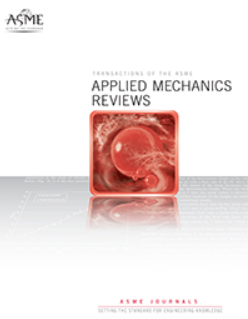Stiction and Friction of Nano- and Microtextured Liquid Silicon Rubber Surface Formed by Injection Molding
IF 16.1
1区 工程技术
Q1 MECHANICS
引用次数: 0
Abstract
The use of cross-linking polymers such as liquid silicone rubber (LSR) can replicate serviceable surfaces with nano- and microstructures via the injection molding process. Laser ablation can be used to introduce microstructures into molding tools, while nanostructures are generated via PVD coating processes on the tools. This is why nanostructures are built using self-organized layer growth. The aim of this study was to generate evidence of direction-dependent coefficients of friction of elastomeric surfaces in dry or lubricated contact in boundary friction. Models of the dry friction of elastomeric surfaces, such as Schallamach waves or stick-slip cycles, were used to describe the friction modulation of such surfaces. Assumptions for model contacts against smooth partners, both dry and with lubrication, as well as assumptions for the interaction of structures with smooth surfaces, were investigated. It was found that for elastomer surfaces with Shore hardness 50, nanostructures are suitable for creating a direction-dependent friction increase in static and sliding friction. Friction reductions with defined microstructures are possible if their periodicity seems to interact with the wavelength of possible Schallamach waves. The choice of lubrication determines the forced wetting of the contact, but due to the structuring, there is a continuous transition to mixed friction.注射成型液态硅橡胶纳米和微织构表面的粘滞和摩擦
使用交联聚合物,如液体硅橡胶(LSR),可以通过注射成型工艺复制具有纳米和微结构的可用表面。激光烧蚀可以在模具中引入微结构,而PVD涂层可以在模具上产生纳米结构。这就是为什么纳米结构是用自组织层生长来构建的。本研究的目的是产生证据的方向依赖的摩擦系数的弹性表面在干或润滑接触的边界摩擦。弹性体表面的干摩擦模型,如沙拉赫波或粘滑循环,被用来描述这种表面的摩擦调制。研究了模型与光滑伙伴接触的假设,包括干燥和润滑,以及光滑表面结构相互作用的假设。研究发现,对于邵氏硬度为50的弹性体表面,纳米结构适合在静摩擦和滑动摩擦中产生方向相关的摩擦增加。如果确定微观结构的周期性似乎与可能的沙拉马赫波的波长相互作用,则摩擦减小是可能的。润滑的选择决定了接触的强制润湿,但由于结构的原因,存在向混合摩擦的连续过渡。
本文章由计算机程序翻译,如有差异,请以英文原文为准。
求助全文
约1分钟内获得全文
求助全文
来源期刊
CiteScore
28.20
自引率
0.70%
发文量
13
审稿时长
>12 weeks
期刊介绍:
Applied Mechanics Reviews (AMR) is an international review journal that serves as a premier venue for dissemination of material across all subdisciplines of applied mechanics and engineering science, including fluid and solid mechanics, heat transfer, dynamics and vibration, and applications.AMR provides an archival repository for state-of-the-art and retrospective survey articles and reviews of research areas and curricular developments. The journal invites commentary on research and education policy in different countries. The journal also invites original tutorial and educational material in applied mechanics targeting non-specialist audiences, including undergraduate and K-12 students.

 求助内容:
求助内容: 应助结果提醒方式:
应助结果提醒方式:


